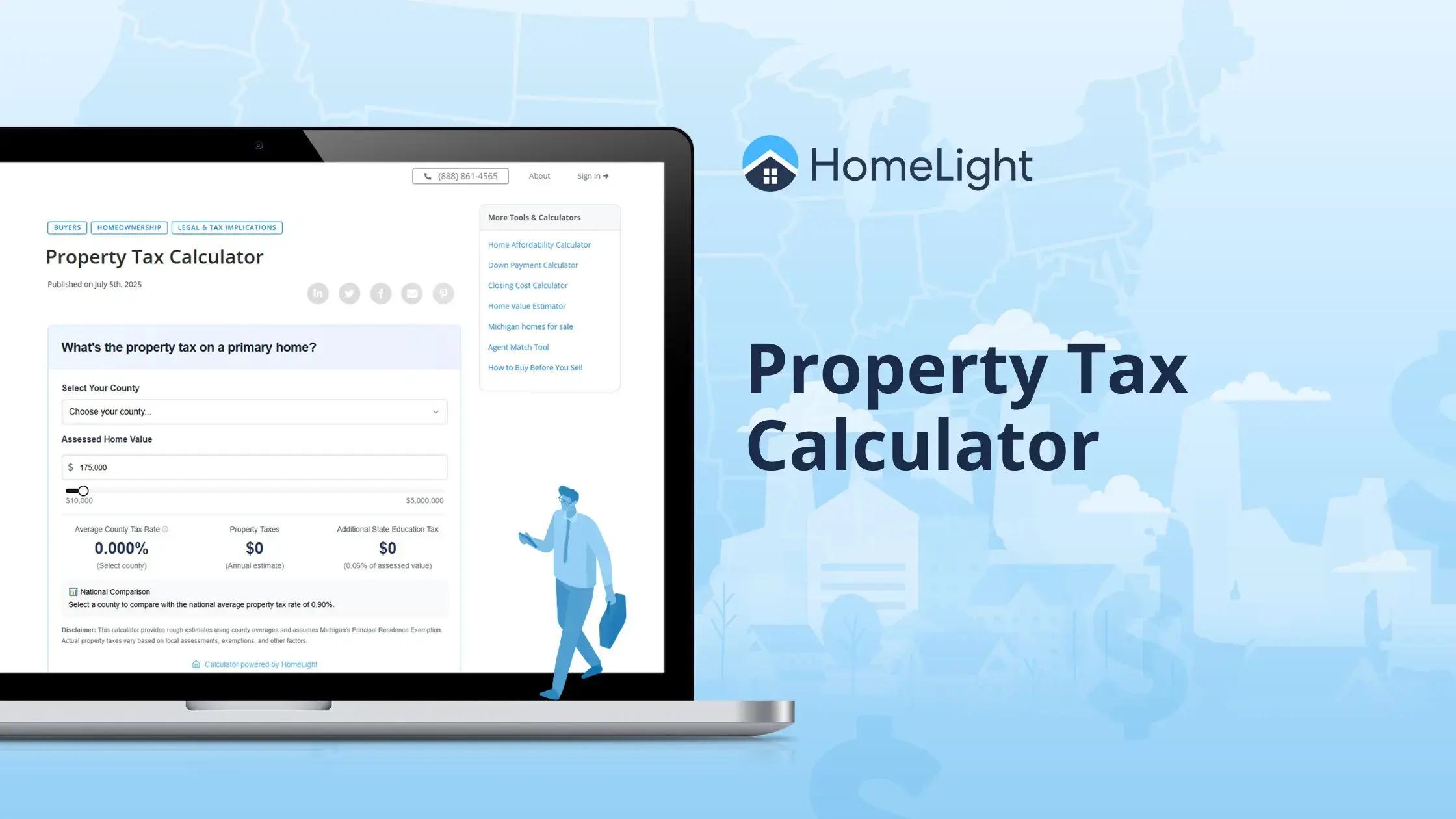
DISCLAIMER: This article is meant for educational purposes only and is not intended to be construed as financial, tax, or legal advice. HomeLight always encourages you to reach out to a professional advisor regarding your own situation. You sold your home last year and moved on with your life — literally. Congratulations! But now it’s tax time, and you want to get organized. Your first step is to figure out what documents you need in order to file. For this post, we’ve worked with some pros to compile a starting checklist for you of all the home sale-related documents you’ll need at tax time. We spoke to top Missouri real estate agent Chris Skinner, who’s also an attorney at law and Certified Public Accountant (CPA) with over 20 years of experience, and Nathan Rigney, lead tax analyst at H&R Block, to find out what home sellers need to know this tax season. There are a few documents you’ll need when you file your taxes if you sold a house in the previous year. Knowing which ones you need, which ones you don’t need, and where to get them if you need them can become confusing, so we’ve worked with the experts to help break it down for you. Federal tax law generally requires lenders or real estate agents to file a Form 1099-S, Proceeds from Real Estate Transactions, with the IRS when you sell your home, unless you meet IRS requirements for excluding capital gains tax. According to the Internal Revenue Service, you might not have to pay taxes on the sale of your home at all, thanks to capital gains tax exclusions. (More on that later.) However, if you don’t qualify for capital gains tax exclusions, your home sale will be reported to the IRS through a 1099-S form. Be sure to check with your personal tax professional to see if you might fit into one of these exclusions. A copy of the 1099-S should be provided to you by the title or settlement company that handles the settlement, Skinner explains. “Typically, the 1099-S is issued at closing and will be included in the closing documents the seller receives at settlement. Note: the IRS will not be sending the 1099-S. The settlement company will issue it.” If you didn’t receive one, it may be because you don’t need to file it. “If the profit (gain) on the sale of the home is less than $250,000 (for individuals) or $500,000 (for married filers), then no capital gains taxes will be owed” for most typical situations, Skinner points out. There are some requirements to qualify for this capital gains tax exclusion, which we’ll address below. However, he adds, even if you owe no taxes, you will still need to report the sale of the home on your tax return. “This is because the 1099-S reports the gross proceeds of the sale and provides no information as to whether any is taxable or not.” If you aren’t sure whether or not you should expect a 1099-S form, talk to your closing attorney (if your state requires one) or real estate agent. If you need to file but didn’t receive a form, you can download it from the IRS website. You can also download or print an instructions PDF. Form 1098 is a mortgage interest statement to report mortgage interest paid to a lender on your home loan during the previous year (if it’s more than $600). “In a year where you have sold your home, you will still get a 1098 for the interest you paid for that portion of the year where the loan was outstanding,” Skinner says. It also includes itemizations for prepaid points, mortgage insurance or private mortgage insurance (PMI). You can deduct the amount of mortgage interest you paid on your tax return. “Real estate taxes, in most cases, are also reported on there if you paid them through escrow,” says Rigney. The IRS adds a caution: be sure to report only the exact amount paid for real estate taxes. The amount you put in escrow is just speculative, based on estimated costs, but may not be the final total. It’s important to note that the itemized deduction for mortgage insurance premiums has expired. You can no longer claim the deduction for 2022. The loan company should mail a copy of Form 1098 to you. It may also be included in your January statement. If you didn’t receive one, it may be a good idea to contact your lender or to download a form from the IRS website. A closing statement, or settlement statement, itemizes the costs incurred during your home sale. It’s sort of a receipt for your home sale. You’ll find all kinds of important tax information included on the closing statement. For example, if you escrow your property tax payments with your mortgage company, they’ll be shown on this form. Any property taxes paid at closing should also appear on your settlement statement. As Rigney explains, your closing statement “is going to have some of the information that you might need, like the application of property taxes and the amount that you paid the broker.” To clarify some confusion about a change the IRS made in 2015, Skinner explains that the settlement statement you’ll receive is not an HUD-1. The HUD-1 was replaced by the Closing Disclosure, which contains nearly the same information as the settlement statement, but it’s specific to the borrower and their fees. It’s highly recommended that you keep receipts that prove your cost basis. The IRS defines the adjusted base as the cost of acquiring your home plus the cost of any capital improvements you made, minus casualty loss amounts, tax credits (like Residential Energy Credits) and other decreases (such as depreciation on rental property). As Skinner explains, “deductions pertain to ordinary income and expense items. The proper term is ‘reduction of sales proceeds’ when calculating gain.” Some examples include sales commissions and transfer taxes. The basis can also be used to figure depreciation, amortization, casualty losses, and more. Skinner, however, points out that loss amounts and depreciation pertain only to rental property, not a primary residence. “In general, your basis would be purchase price plus costs of purchase (i.e., transfer taxes), plus improvements,” Skinner elaborates. “Depending on the size of the improvements, that could add to the basis substantially.” While you generally can’t deduct home improvements at the time you have the work done (with some exceptions for energy credits), keeping track of repairs could benefit you when it’s time to sell. For DIY home improvement projects, it’s probably a good idea to keep those materials receipts. “If you did it yourself, you can’t include the value of your services, but you can include all the materials that went into it and any permits that you had to pay for,” says Rigney. Essentially, therefore, your cost basis is typically your total investment in the home, which is used to determine whether you gained from the sale. If the amount you make in selling your home, minus your selling expenses (such as closing costs), is more than your adjusted basis, it’s indicative of a capital gain on the sale. Or, as Skinner puts it: Sales price less the costs of the sale (i.e., commission), less basis gives you the amount of the gain. Did you know that Baby Boomers held an average of 12.4 jobs from ages 18 to 54? Moving for work is not uncommon. Some of those jobs required moving to a new home. It’s possible to qualify for a partial capital gains tax exemption if you had a work-related move. For example: The move must take place within a year of the commencement of employment at the new job and you must work full time for at least 39 weeks of the first year after starting the job. It’s up to you to provide documentation proving that your move was work-related. “If you claimed a reduced exclusion because you got a new job in a different city and then moved because of it, you’re going to want some evidence of that,” says Rigney. However, Skinner points out, there’s no one particular document required by the IRS to prove that a move was work related. “Any form of proof issued by the employer should suffice.” That could include an offer letter or notice of transfer. Note that, as per the current IRS guidelines, you can only deduct the actual moving expenses for tax years prior to 2018 unless you’re an active member of the U.S. Armed Forces moving because of a permanent change of station. To qualify for the Section 121 capital gains tax exclusion, you must show that you own your home and that it was your primary residence for at least two of the five years prior to the date of sale. To prove both, provide documentation with your name and address, such as: Summarizing the documents and receipts you’ll want to keep, Skinner lists, “The original settlement from the purchase, records of improvements, and the final settlement statement from the sale should suffice.” Rigney also advises that if there’s a question of whether you should save something or toss it, always save it. It could come in handy when tax season rolls around, especially if the IRS chooses to look into your home sale. “You’re going to need records in case you get audited,” he says. Profits made from the sale of appreciable assets – including your home – are often considered capital gains and subject to tax. However, it’s possible to exclude the profit, or capital gains, you made from selling your home when tax time rolls around if you meet certain criteria. Under the capital gains tax exclusion, in the sale of a primary residence, the first $250,000 of profits are typically not taxed if you file your taxes as single (or $500,000 if you and your spouse file jointly) – and if you meet additional requirements. The IRS refers to this as the Section 121 exclusion. There are some helpful things to keep in mind before you assume you can avoid paying taxes on your home sale. Eligibility under Section 121 requires passing the “ownership” and “use” tests: There are many nuances to the Section 121 exclusion. It’s always best to consult your tax professional for the most up-to-date information in your state. “I tell everybody to consult with their tax financial advisors because it depends on your estate planning needs, your age, where you’re at income-wise and investment-wise. It’s not really cut and dried,” says Chris Carter, who ranks in the top 2% of 2,633 agents in Jackson County, Missouri. Do you always get a 1099 when you sell a house? No. Certain exceptions can apply (e.g., if you qualify for one of the Section 121 exemptions, you may not receive a 1099-S). What is a 1098 tax form used for? The 1098 form is generally used to report mortgage interest in excess of $600 that you received. Can I use the capital gains exclusion on the sale of my rental property? Profit made from selling a rental property or a vacation home can often be taxed in its entirety. The capital gains exclusion generally applies only to primary residences. Do I have to tell the IRS I sold my home? If you receive an income-reporting document such as Form 1099-S, Proceeds From Real Estate Transactions, you often must report the sale of your home, even if the gain from the sale is excludable, according to the IRS. You may not need to pay capital gains tax after you sell your home, but it’s often important and always helpful to keep all the documents related to the sale. This includes proof of residency as well as receipts for purchase and sale costs, improvements, and absolutely anything else you think you may possibly need one day. These documents may be required to prove you qualify for capital gains exemption, to document tax deductions, or to get you through a tax audit if it happens. For more suggestions, visit HomeLight’s Finances & Tax Implications landing page and always be sure to consult with your professional tax advisor on the particulars of your situation.Here are 7 home sale documents you’ll likely need for tax time
1. 1099-S form to report your capital gains
2. 1098 form as a record of your mortgage interest payments
3. Closing Statement, which is a receipt for your home sale
4. Records to determine your cost basis
5. Documents showing you had a work-related move
6. Documentation that proves your home was your primary residence
7. Any documentation, records, or receipts from your home sale
Some profit on a home sale can be tax-free
Section 121
Q&A: More expert tips and insights about your home sale and taxes
Bottom line: Saving these documents will save you time and frustration


